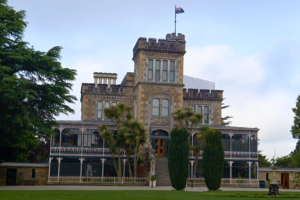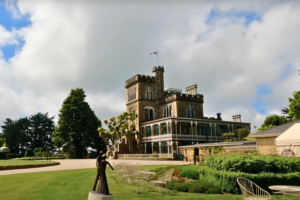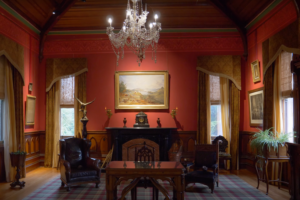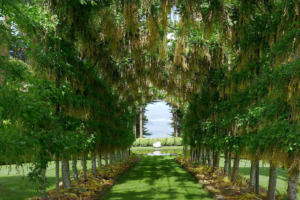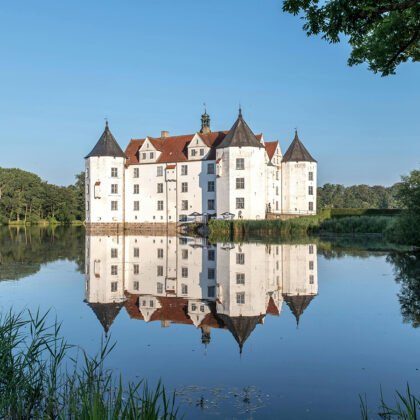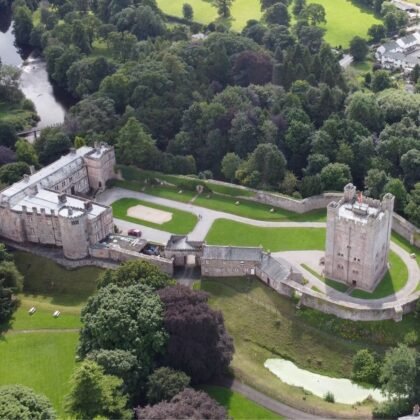Perched high above the Otago Peninsula, Larnach Castle looks out over hills, gardens, and the blue sweep of the harbor. There’s a kind of wild romance to the place, with winding staircases, stained glass, and stories that linger in every room. Visitors come for the views, but it’s the sense of history—of fortunes won and lost—that makes the castle hard to forget.
Quick Facts
📍 Location: Dunedin, Otago Peninsula, New Zealand
🏗️ Construction Period: 1871–1874 (additions until 1887)
🏰 Architectural Style: Gothic Revival with Venetian and colonial influences
🎭 Famous For: Only castle in New Zealand, lavish interiors, tragic history, romantic gardens
👑 Notable Figures: William Larnach and family
🏆 UNESCO Status: Not listed, but considered a national treasure
🌐 Official Website: https://www.larnachcastle.co.nz/
Map
Historical Context
There’s a strange mix of grandeur and heartbreak woven into Larnach Castle’s past. William Larnach, who made his fortune in gold and politics, wanted a home to impress. By the late 1800s, his castle was the talk of Dunedin—lavish rooms, imported glass, even a ballroom for the family. But behind the scenes, things weren’t so rosy. Larnach’s family suffered through tragedy after tragedy, and the house changed hands more than once. For years, the castle sat neglected, its towers battered by the Otago winds. Then the Barkers arrived in the 1960s with a stubborn vision to restore the place, and little by little, Larnach Castle came back to life. Walk these halls today and you’ll sense not just the splendor, but also the human ups and downs that shaped this unlikely landmark.
Gallery
Visiting Information
🗓️ Best Time to Visit: November to March
🗺️ Location Perks: Sweeping vistas of the Otago Peninsula and Dunedin from the castle’s tower and gardens.
⏳ Estimated Visit Duration: Plan to spend 2–3 hours exploring Larnach Castle’s lavish interiors, lush gardens, and panoramic terraces.
💡 Visiting tips: Allow time to stroll through the gardens—they change with the seasons and are full of surprises.

